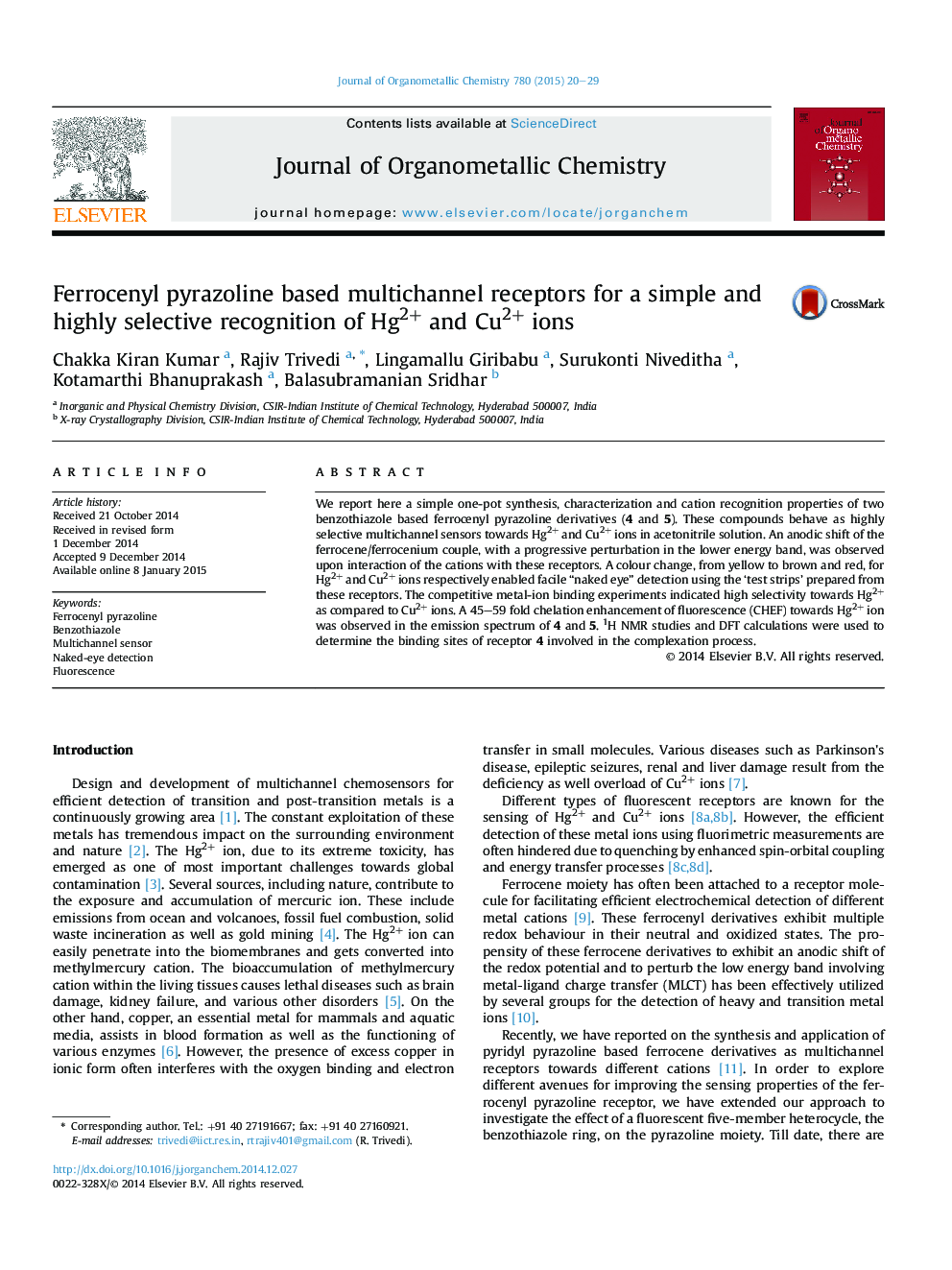| Article ID | Journal | Published Year | Pages | File Type |
|---|---|---|---|---|
| 1325225 | Journal of Organometallic Chemistry | 2015 | 10 Pages |
•Two ferrocenyl benzothiazole receptors as multichannel sensors for Hg2+ and Cu2+ ions.•The sensing behaviour is explained by using redox, UV–vis and emission properties.•These receptors show high selectivity and sensitivity towards Hg2+ over Cu2+ ions.•The binding mode and plausible structure of complex is explained by DFT studies.
We report here a simple one-pot synthesis, characterization and cation recognition properties of two benzothiazole based ferrocenyl pyrazoline derivatives (4 and 5). These compounds behave as highly selective multichannel sensors towards Hg2+ and Cu2+ ions in acetonitrile solution. An anodic shift of the ferrocene/ferrocenium couple, with a progressive perturbation in the lower energy band, was observed upon interaction of the cations with these receptors. A colour change, from yellow to brown and red, for Hg2+ and Cu2+ ions respectively enabled facile “naked eye” detection using the ‘test strips’ prepared from these receptors. The competitive metal-ion binding experiments indicated high selectivity towards Hg2+ as compared to Cu2+ ions. A 45–59 fold chelation enhancement of fluorescence (CHEF) towards Hg2+ ion was observed in the emission spectrum of 4 and 5. 1H NMR studies and DFT calculations were used to determine the binding sites of receptor 4 involved in the complexation process.
Graphical abstractA series of two ferrocene based benzothiazole derivatives are prepared in one-pot method and these receptors behave as highly selective multichannel sensor towards Hg2+ and Cu2+ ions. The recognition ability and binding assay for these receptors towards these metal ions are explained by using redox (DPV) and optical (UV–vis and emission) studies.Figure optionsDownload full-size imageDownload as PowerPoint slide
